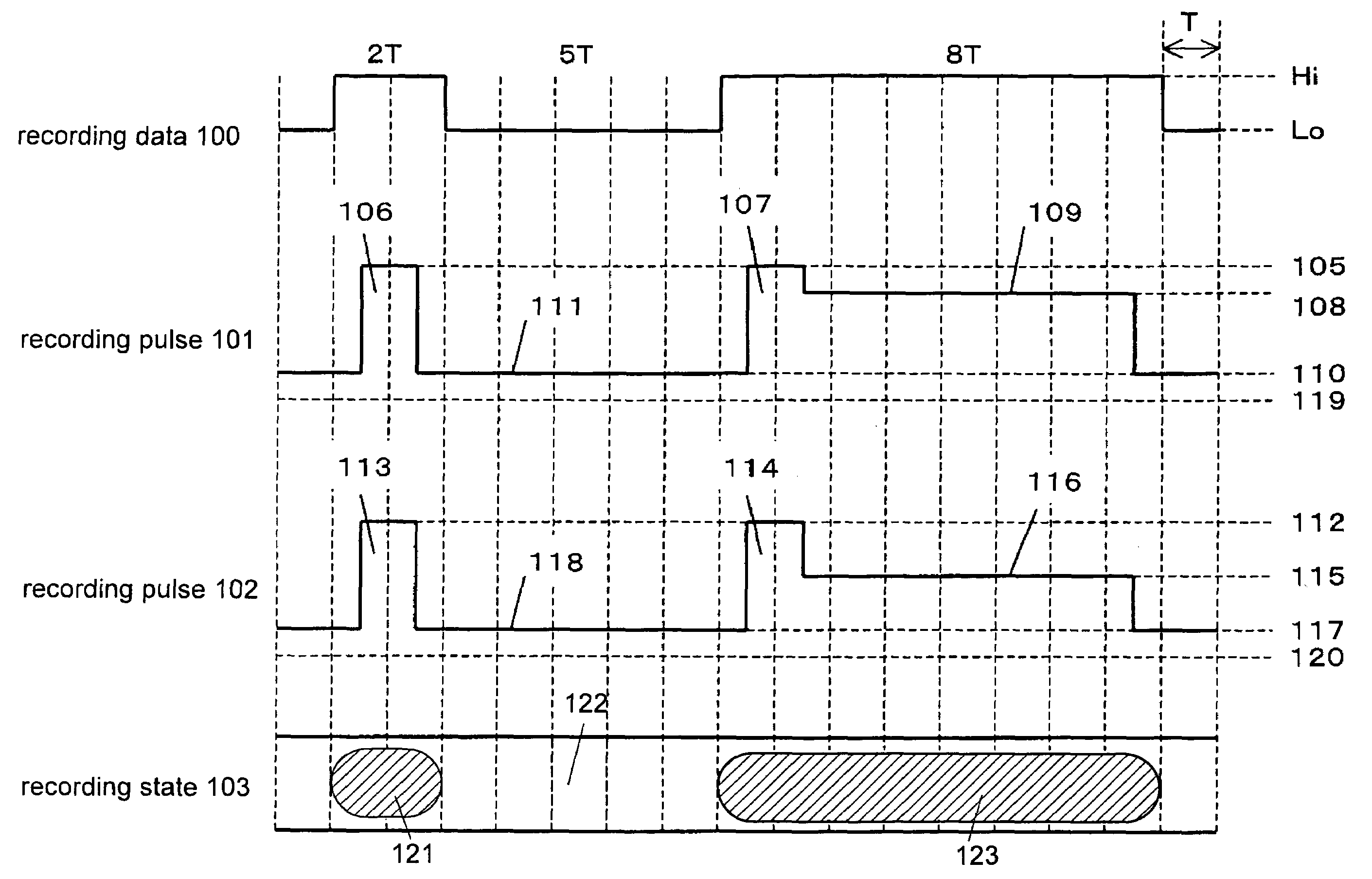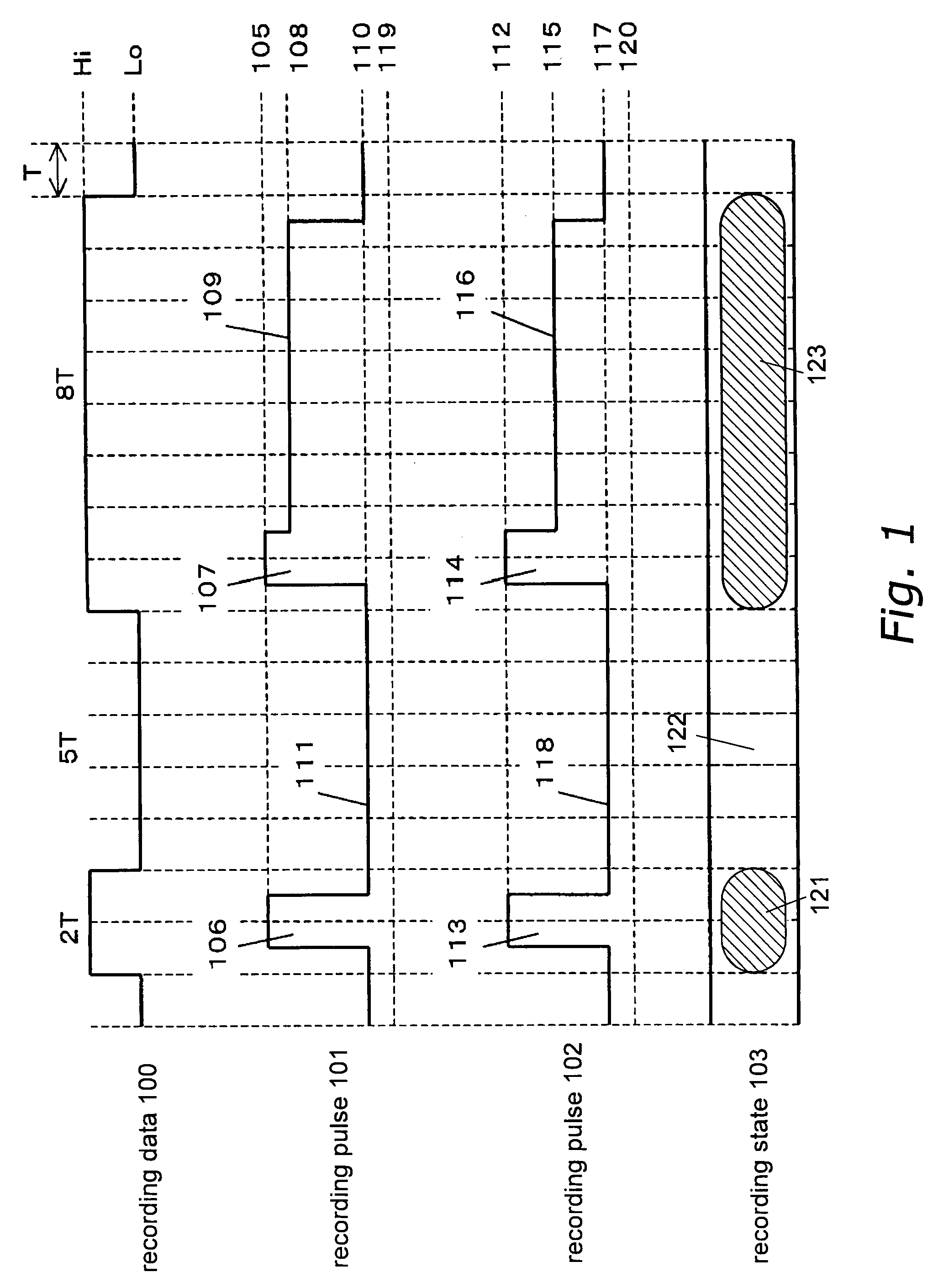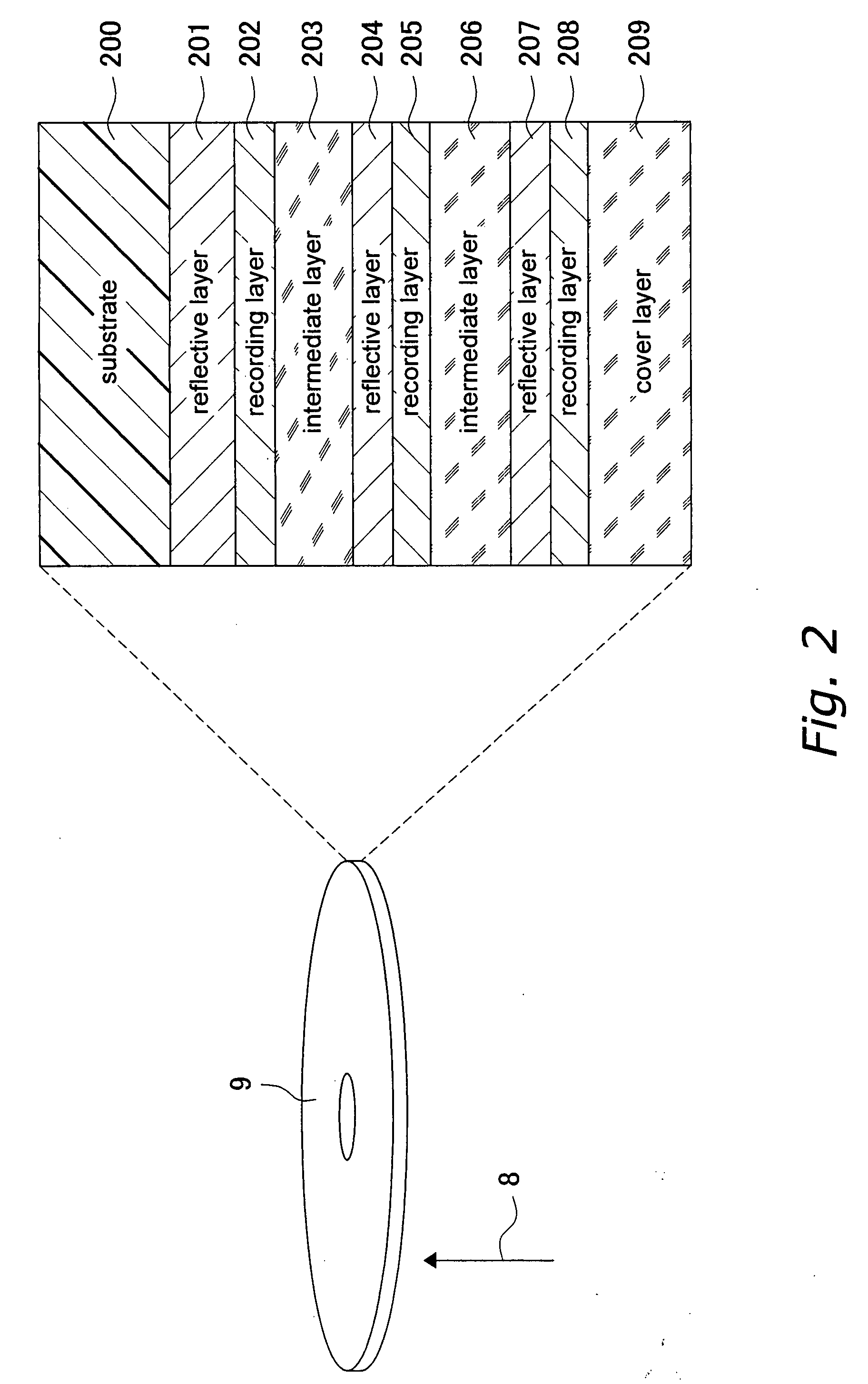Optical Disc Recording Device, Method for Recording Data Onto Optical Disc, and Optical Disc
a recording device and optical disc technology, applied in the field of optical disc recording devices, methods for recording data onto optical discs, optical discs, etc., can solve the problems of difficult to suppress the distortion of marks at all linear velocities, difficult to raise the rise rate of laser beams, and difficult to suppress the distortion of marks in all linear velocities, so as to increase the capacity of next-generation optical discs, further suppress the distortion of marks, and enhance recording quality
- Summary
- Abstract
- Description
- Claims
- Application Information
AI Technical Summary
Benefits of technology
Problems solved by technology
Method used
Image
Examples
embodiment 1
[0040]The method for recording data on an optical disk pertaining to Embodiment 1 of the present invention is utilized, for example, when the above-mentioned optical disk recording and reproduction device 1000 records data on either of the recording layer 202 closest to the substrate 200 (that is, deepest) and the middle recording layer 205 (see FIG. 2).
[0041]In FIG. 1, recording data 100 include a high-level (Hi) signal with a pulse width of 2T (2 times the recording clock period T), a low-level (Lo) signal with a pulse width of 5T, and a Hi signal with a pulse width of 8T, in that order. The Hi signal with a pulse width of 2T corresponds to the shortest mark 121 with a length of 2T, the Lo signal with a pulse width of 5T corresponds to a space 122 with a length of 5T, and the Hi signal with a pulse width of 8T corresponds to a long mark 123 with a length of 8T. When the recording data 100 is to be written on the deepest recording layer 202, the recording pulse production unit 4 pr...
embodiment 2
[0050]The method for recording data on an optical disk pertaining to Embodiment 2 of the present invention is utilized, for example, when the above-mentioned optical disk recording and reproduction device 1000 sets the recording speed (the linear velocity of the optical disk 9 during data recording) to its usual value (the optimal value specific to the optical disk 9 (such as a standard speed)), or to a higher value (such as a double speed), and records data on the middle recording layer 205 (see FIG. 2). Here, the optical disk recording and reproduction device 1000 reproduces the data recorded on the optical disk 9 at the usual speed (such as a standard speed).
[0051]For example, in FIG. 5, recording data 500 during recording at a standard speed includes a Hi signal with a pulse width of 2T (2 times the recording clock period T at a standard speed), a Lo signal with a pulse width of 5T, and a Hi signal with a pulse width of 8T, in that order. When the recording is performed at the s...
embodiment 3
[0058]Preferably, when the above-mentioned optical disk recording and reproduction device 1000 is mounted in a notebook PC or other such portable information device, the method for recording data on an optical disk pertaining to Embodiment 3 of the present invention is utilized. In this case, the optical disk recording and reproduction device 1000 sets the recording speed according to an operating state of the portable information device (whether or not it is connected to an AC power supply, the remaining battery charge, the quantity / priority of tasks being processed, and so forth). In particular, when it is necessary to lower power consumption, the recording speed is generally set lower than the optimal value specific to the optical disk 9. This lowers the laser power consumption (and particularly at the first recording power).
[0059]For example, in FIG. 6 the recording speed is set to a standard speed, and recording data 600 includes a Hi signal with a pulse width of 2T, a Lo signa...
PUM
| Property | Measurement | Unit |
|---|---|---|
| thickness | aaaaa | aaaaa |
| thickness | aaaaa | aaaaa |
| thickness | aaaaa | aaaaa |
Abstract
Description
Claims
Application Information
 Login to View More
Login to View More - R&D
- Intellectual Property
- Life Sciences
- Materials
- Tech Scout
- Unparalleled Data Quality
- Higher Quality Content
- 60% Fewer Hallucinations
Browse by: Latest US Patents, China's latest patents, Technical Efficacy Thesaurus, Application Domain, Technology Topic, Popular Technical Reports.
© 2025 PatSnap. All rights reserved.Legal|Privacy policy|Modern Slavery Act Transparency Statement|Sitemap|About US| Contact US: help@patsnap.com



